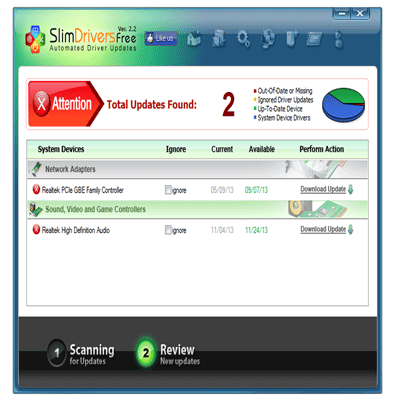Nowadays everybody uses technology and is in contact with computers. We spend many hours working on PC so it is very important to fix the brightness of your laptop as it has great significance because, in one way or another, it affects the eye side. Windows 10 manages brightness on supported PCs, but there are many users who disable auto or adaptive screen brightness to manage the brightness level on their own.
The good news is that Windows 10 refers some methods to manage the screen brightness compared to other Windows. Except for the hotkeys, users can also utilize the Settings application and Action Center to manage the brightness of their PC’s screen in Windows 10.
Keep in mind that some of the below procedures will not be workable on a desktop PC that is interconnected to an external monitor. How to adjust brightness on Windows 10 is a question that is important for the sake of the user’s convenience:
1). Managing Screen Brightness Utilizing Hotkeys:
Most notebooks come with keys that can easily adjust the brightness of the screen. Like on a ThinkPad laptop, Fn + F5/F6 is utilized to manage the brightness of the screen. You have to look at your keyboard so you can see the sign of brightness on the Function keys. In case the hotkeys are not working, confirm that the screen and keyboard drivers are downloaded.
2). Utilizing the Action Center to Show Brightness in Windows 10:
- As the first step tap on the Action Center icon in the taskbar to see the Action Center pane.
- Then press on the brightness tile to increase or reduce the brightness. In case you can’t see the brightness tile, just tap the button of Expand.
- The time you press on the brightness tile, it will increase the brightness to the next level. In case you tap on the tile when the brightness is at 25%, the brightness will be increased to 50% when the second time you will press it. When you see that the brightness has reached 100%, then tap on the tile once again so you can begin at 0%.
3). Utilizing Settings to Manage Screen Brightness in Windows 10:
How adjust brightness on Windows 10 can be done by increasing or reducing the brightness one percent at a time.
- As the initial step open settings by pressing on the icon that is on the Start menu.
- Here at the home page of Settings, tap System.
- Now you should see Adjust brightness level option with a slider to manage the brightness. In case you are unable to see the option, just press on Display (Settings > System > Display).
Also, note that the brightness level adjuster will not pop up in case you’re trying to manage the screen brightness of a monitor that is interlinked with your system.
4). Utilizing Control Panel to Manage Brightness in Windows 10:
This is another good method to answer the question of how to adjust brightness on Windows 10 on your own.
Just right-click on the battery icon in the system tray of the taskbar and tap adjust screen brightness option to open the Power Options window.
- Now at the bottom of the screen, you will see the Screen brightness option with a slider. Just drag the slider towards the left of the screen to lower the screen brightness and towards the right to increase it.
5). Adjusting Brightness in Windows 10 on your Own:
Here just tap Windows key + I to open Settings and go to System > Display. Beneath Brightness and color, utilize the Change brightness slider. By moving it to the left you can make it low and to the right, it would be bright.
In case the slider is not accessible then it’s one of two things. In the condition of utilizing an external monitor then you can go for external buttons so you can manage the brightness. You can also go and update the display driver.
It would be done by tapping the Windows key + X and pressing Device Manager. Now extract Display adapters and right-click your graphics card. At the end tap Update driver and follow the wizard.
6). Adjusting Brightness for Battery Life on your Own:
Windows 10 has a feature a battery saver that can reduce your PC’s brightness via automatic processing when it is in enabled mode.
You can allow it by tapping Windows key + I to open Settings and go to System > Battery saver > Battery saver settings.
- Tick the option of Turning the battery saver on automatically in case my battery falls below and utilize the slider so you can manage what percentage battery level you need.
- At the end tick lower screen brightness when it is in battery saver mode. It doesn’t seem to be possible to adjust what brightness level is utilized, but we hope that Microsoft will include that in a future Windows 10 update.
7). Managing Brightness on your Own for Power Plan:
Users can have dissimilar brightness that depends on different conditions like if your system is on charging or running off the battery. You can save battery by adjusting the brightness level when it’s not attached to the plug.
Tap Windows key + R to open Run, input the control panel, and press OK. Then go to Hardware and Sound > Power Options and press Change plan settings next to your chosen plan.
- Now just Adjust the plan brightness slider to manage on battery and Plugged in levels and tap Save changes.
8). Utilizing Adaptive Brightness in Windows 10:
It would be best if your monitor’s brightness matches the light around your surroundings. One method to assist with this is to have the brightness change via automatic way depending on your ambient light.
- You can only use this feature in case your device has a brightness sensor. You can make it work by tapping the Windows key + I to open Settings and go to System > Display. In case you see Change brightness automatically when lighting changes, just On it. If you don’t see this, then you don’t have the sensor.
- Another best method to manage this is via the Control Panel because you can adjust it as it is based on your power plan. Just tap the Windows key + R, input the control panel, and press OK.
- Here now in the Control Panel, go to Hardware and Sound > Power Options > Change plan settings > Change advanced power settings.
- In the end, extract Display > Enable adaptive brightness and utilize the dropdowns to set it for On battery and Plugged in.
9). Brightness Managing Shortcuts in Windows 10:
How to adjust brightness on Windows 10 issue can be solved by managing shortcuts in Windows 10. Users can do it by following the below instructions:
- In case you’re utilizing a laptop, you might probably have keyboard shortcuts to turn your PC’s brightness to increase or decrease. Go for the function keys, you will see that the button brightness is represented by a sun icon.
- There is another shortcut to manage brightness by pressing the Action Center icon in the taskbar (or clicking Windows key + A.) Press the brightness tile to cycle through in 25 percent increments.
In case you are unable to see the icon, just tap Windows key + I, go to System > Notifications & actions > Add or remove quick actions, and slide Brightness to On.
-
- In case you need a good third-party utility just check out the Windows 10 Brightness Slider. This lightweight utility will add a brightness icon to your PC’s tray, which you can then tap to manage your brightness on a slider. It is the same as the way the button volume works.
- At the end goes to the GitHub project, install the file, and open it. You will see that it will go into your tray via automatic processing. In case you need it to be there whenever you want it in the future as well, just right-click the icon and tap the option of Run At Startup.
10). Optimize Your Display for Eye Health and Comfort:
We hope that through this article you have come to know how to adjust brightness on Windows 10. Don’t forget that the right brightness settings will be helpful for your mental comfort zone as well as your eyes, so you might probably go and check about the best laptop position so it doesn’t bother you or you can work easily with convenience too.
The time you have fixed the brightness, you should check your monitor’s color temperature. The light that comes out from our system’s screens is one of the main reasons for sleep issues and so can probably utilize programs such as f.lux or Windows 10’s Night Light feature to deal with it.
Conclusion:
How to adjust brightness on Windows 10 is an issue that is very important for all of us to resolve, because it causes many issues that we have explained above, and one of them is that sometimes-increasing case brightness cause trouble for the eyes and the user’s mind and they feel irritation. We hope that from the above article, you might probably solve this problem and work without any issues.










